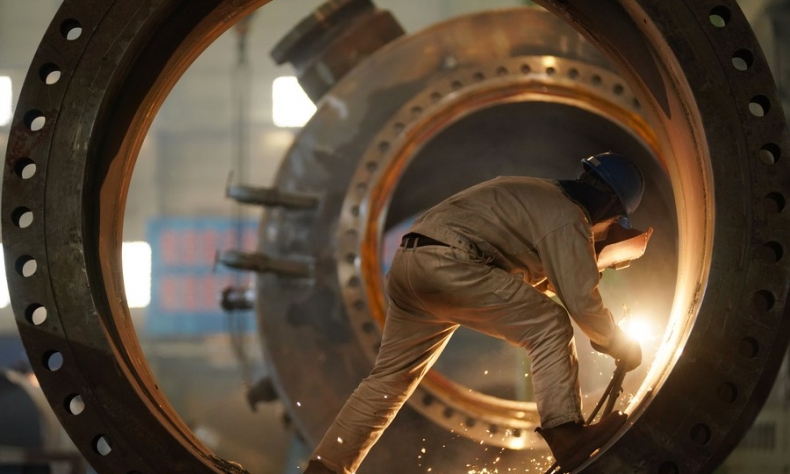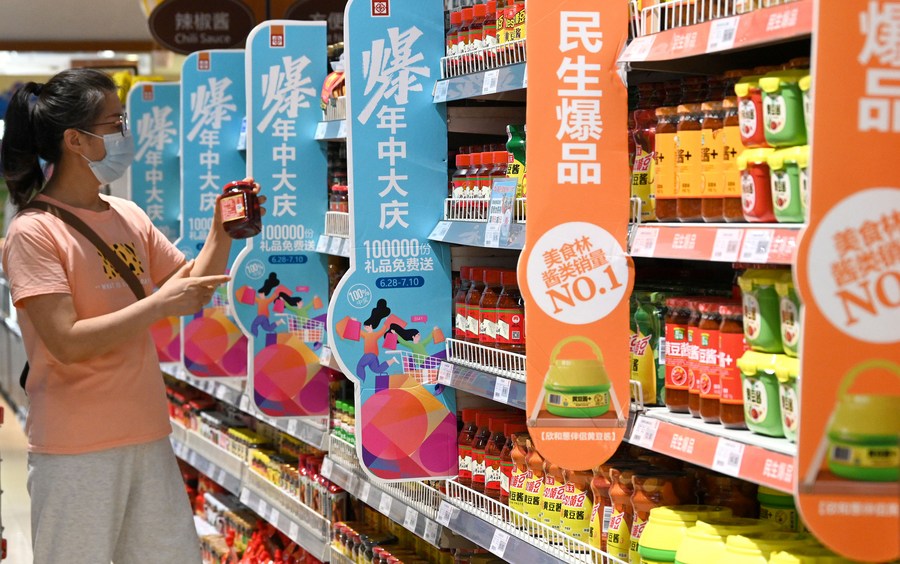Blip to Boost

What China pursues is a stable and sound economic environment, stressing a month-on-month growth rate that can better reflect the extent of economic recovery than the year-on-year rate against the backdrop of domestic and international economic turmoil.
During its meeting on July 28, the Political Bureau of the Central Committee of the Communist Party of China discussed China’s current economic situation and outlined its economic work for the second half of this year (H2). Tasks include always keeping an eye on the COVID-19 pandemic, sustaining economic growth for an upbeat momentum, ensuring production safety, stabilizing prices and ensuring the economy operates within a rational range. The meeting came at a time when the Chinese economy operates under huge pressures and needs to be revved up.
The first half of this year presented a challenging outlook, with GDP up by only 2.5 percent year on year, much lower than the 5.5-percent target set earlier this year. Two factors are to blame for this: The resurgence of COVID-19 cases in big cities like Beijing and Shanghai has weighed on the overall economy. Additionally, the Russia-Ukraine conflict has sent energy and grain prices soaring, catapulting the international economy into chaos. Within this complicated context, the 2.5-percent rate is no easy feat.
These clouds continue to hover over the Chinese economy in H2, with the pandemic still casting a big shadow.
In accordance with this meeting, macroeconomic policies should help boost demand, further supported by effective fiscal and monetary policies. Monetary policy should guarantee a reasonable level of liquidity and ramp up support for businesses. It’s important to enhance the industrial and supply chains and international competition, and help China’s central and western regions improve their infrastructure and business environment.
The coming months will see almost no additional policies to those proposed at the beginning of the year. What China pursues is a stable and sound economic environment, stressing a month-on-month growth rate that can better reflect the extent of economic recovery than the year-on-year rate against the backdrop of domestic and international economic turmoil.

Several economic indicators took a dive in March and April and then showed signs of rebounding in May. In June, this upturn momentum was even more striking. With the pandemic tamed and production back to normal, the Chinese economy’s odds of maintaining an upward spiral are looking good.
And a rosier picture now unfolds across several sectors. The primary industry is operating smoothly, boasting a bumper summer harvest and expecting a similarly big autumn harvest. The secondary industry soon bounced back after experiencing a blip in April, evidenced by rising industrial power consumption. The tertiary industry, too, has turned the corner. Much of the service sector is reopening in line with COVID-19 prevention and management measures. Resident spending is also on the up.
Everything points to China seeing a smooth upturn of its overall economy in the following months.
But what constitutes a rational range for China’s economic growth? Here, what matters is not the year-on-year GDP growth rate but the quarter-on-quarter rate. If the GDP growth rate for one year is set at 5.5 percent, China will have to hit a rate of 8 percent (or above) in H2; this is neither practical nor realistic.
The recent meeting signals that the country is to pursue the “best possible” economic outcome within the most rational range. Given the target of 5.5 percent for this year, as long as the fourth quarter’s GDP growth is 5.5 percent higher than that of the same period last year, it will mark the best possible result. And current internal and external economic conditions allow for this to happen.
 Facebook
Facebook
 Twitter
Twitter
 Linkedin
Linkedin
 Google +
Google +










